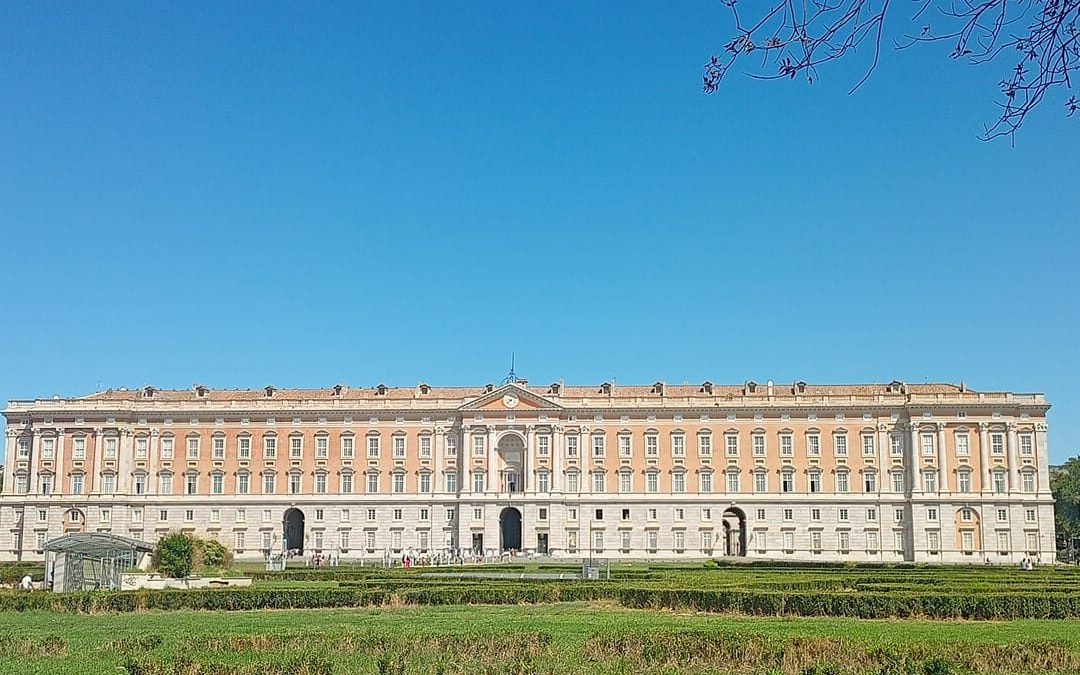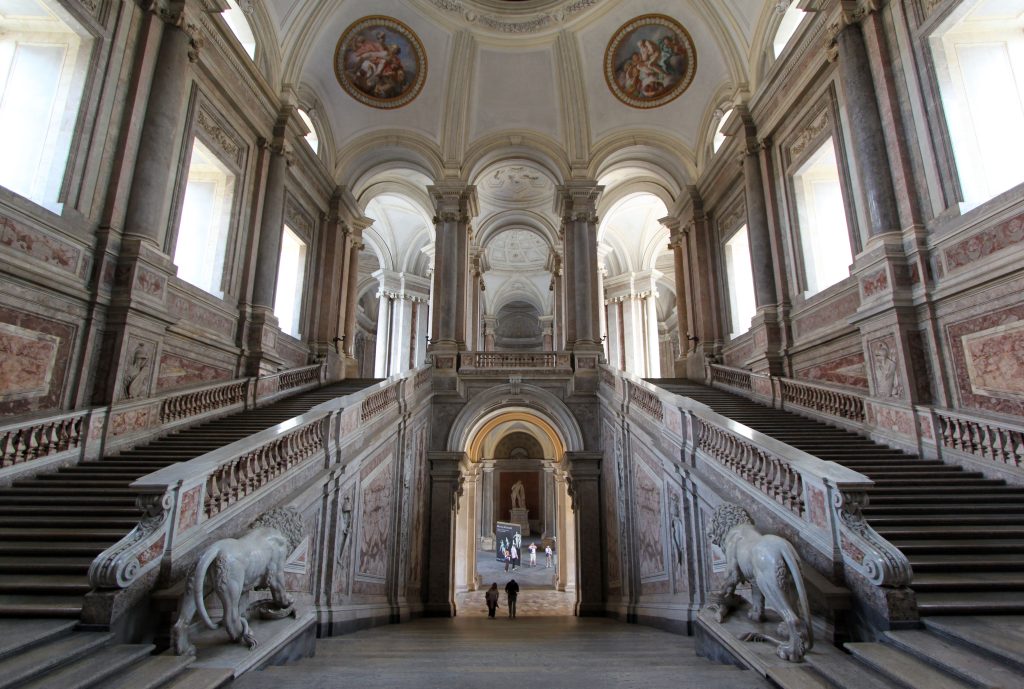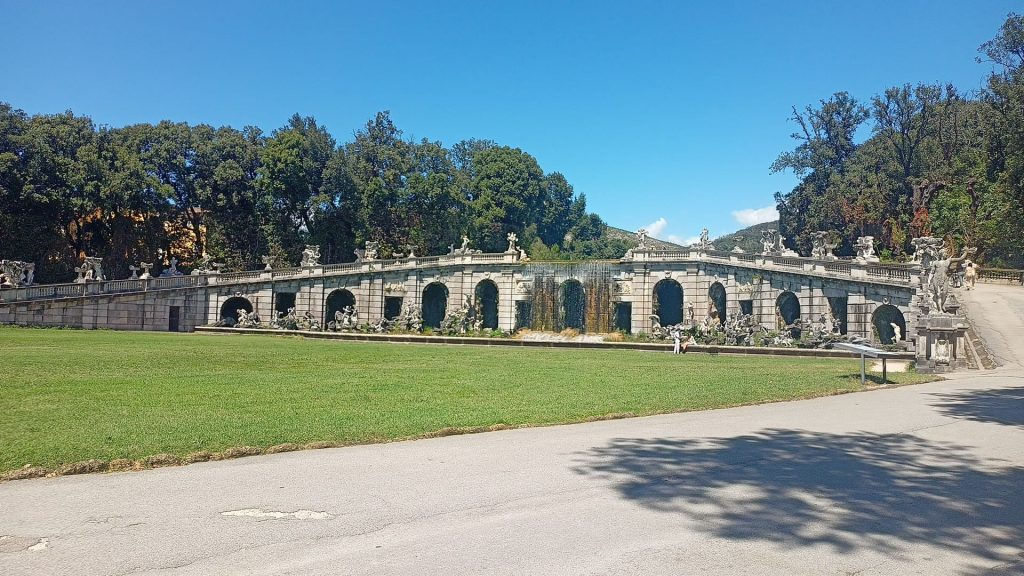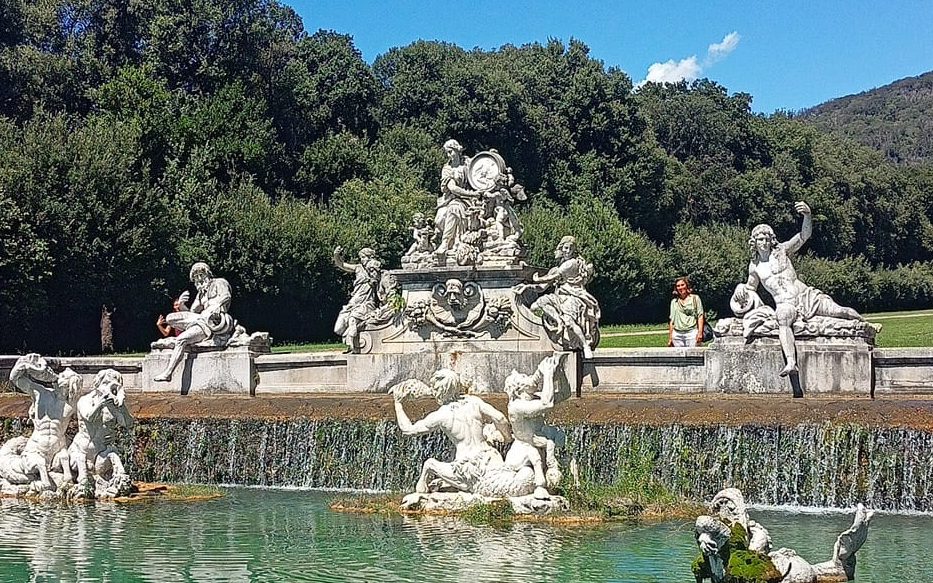The Royal Palace of Caserta, Reggia di Caserta is an 18th century building located in the town of Caserta in southern Italy. It is considered one of the most impressive and largest royal residences in the world and is UNESCO World Heritage Site since 1997 along with the Caroline Aqueduct and the San Leucio Belvedere.
The palace was designed by the architect Luigi Vanvitelli and commissioned by Charles of Bourbon, King of Naples and Sicily. He wanted to build a grand palace that would rival the Palace of Versailles in France. So, he hired the renowned architect to create a masterpiece of Baroque architecture. In 1752, in Caserta, the king lays the first stone of a construction site that will change the fate of the entire area: the Royal Palace of Caserta.

A magnificent palace
The result was a magnificent palace which includes the Royal Park, the English Garden, the San Silvestro Wood, and the Caroline Aqueduct. With its 1,742 windows, 123 hectares of Royal Park, 3 km of Via d’Acqua and over 200 botanical species in the English Garden.
The construction began in 1752, but the King of Spain (Philip V) died and so King Charles had to leave Naples to go to Madrid where he became King. This happened in 1759. When the King left, there was a considerable slowdown. In 1773, Luigi Vanvitelli died, and the work was continued by his son Carlo and other architects who completed this masterpiece of a residence in 1845.
The King of Naples and Sicily
Charles of Bourbon was a powerful and influential ruler who reigned as the King of Naples and Sicily from 1734 until his death in 1759. He was born in 1716 to Philip V of Spain and Elisabeth Farnese and was the first ruler of the Kingdom of the Two Sicilies. The reign of Charles of Bourbon was a period of great change and progress, and he was known for his strong military leadership, and he used his armies to expand the kingdom’s territories and to solidify control over the region. He also implemented a series of reforms to strengthen the economy and encourage economic development. He supported the development of an efficient administration, the reform of the judicial and penal systems, the improvement of public education, and the promotion of the arts.

Charles of Bourbon was also committed to improving the living conditions of the people of his kingdom. He renovated the royal palace, built several churches and public buildings, and funded a number of public works projects. He also implemented a series of reforms to improve the education system and to provide better health care for the poor. His legacy lives on in the modern-day Italian region of Campania, which is named after him.
The architect and his masterpiece
Luigi Vanvitelli (1700 – 1773) is considered one of the most influential Italian architects of the 18th century. His style is best described as Baroque, but he also incorporated elements of the Renaissance in his work.
The Royal Palace is of immense proportions and includes an area of more than 200,000 square meters. Inside the palace, there are more than 1200 rooms, a theater, a museum, and an art gallery. It is divided into two sections: the main palace, which was the residence of the royal family, and the annex, which was used for official functions. The main palace includes the Hall of Mirrors, the Royal Chapel, the Throne Room, and the Hall of the Immaculate Conception. Its annex is composed of the Royal Library, the Royal Armory, and the Royal Theater.

It is known for its impressive façade, which features a row of columns and ornamental statues and surrounded by a large park with water features and extensive gardens, filled with exotic plants and trees. The grounds also include a small village and a park with a scenic lake. The interior is decorated with luxurious chandeliers, frescoes stucco, and marble works.

Visiting the Palace
The Reggia di Caserta is open to the public for tours and special events. Visitors can explore the palace and its grounds and learn about the history of this incredible and impressive example of Baroque architecture.
The Royal Palace of Caserta is a must-see for anyone visiting Italy. There’s plenty of ways to get to the Royal Palace of Caserta. You can choose bus, train, plane, car but consider the environmental impact of your journey before you set your route. It is a testament to the grandeur of the Italian Baroque style and is a great example of the wealth and power of the royal family. It is a great place to explore for admiring the beauty of Italian architecture and culture.
If you are in Campania don’t miss it.
Thanks for stopping by😊!
